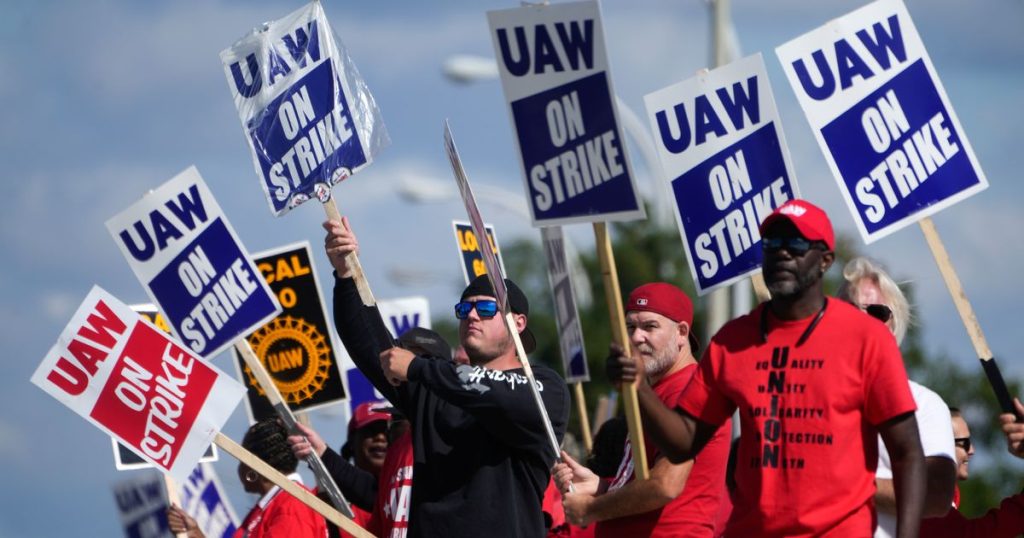Local labor activists are answering the call of the United Auto Workers president, Shawn Fain, to prepare for a powerful strike on May 1, 2028. They are encouraging unionized workers to align the expiration dates of their contracts to that date, giving them greater leverage in negotiations with employers. Several labor councils across the country have endorsed this proposal, hoping to organize mass strikes across industries on International Workers’ Day. This strategy aims to raise standards for working people and push for significant gains.
The Taft-Hartley Act of 1947 restricts organized labor in the United States by prohibiting secondary or sympathy strikes. Large-scale, simultaneous strikes tied to contract expirations could help unions achieve cross-industry impact legally. With only one in ten U.S. workers belonging to a union, unions are looking for innovative ways to increase their clout and advocate for the rights of workers. By aligning contract expiration dates, unions can negotiate more effectively and potentially disrupt multiple industries simultaneously.
Shifting the expiration date of collective bargaining agreements typically requires cooperation from the employer during negotiations. Some companies may be resistant to changing the timing of contracts and providing unions with more leverage for upcoming strikes. Union leaders believe that aligning contracts to end on May Day will involve getting buy-in from rank-and-file union members, as it is a significant demand that requires their support and cooperation.
The success of the UAW strike against the Big Three automakers serves as a powerful example of the potential impact of aligned contracts. By striking simultaneously and strategically, the UAW was able to pressure the automakers to match offers and negotiate effectively. Union members and activists believe that coordinated bargaining can give unions more power and enable them to achieve significant gains for workers across different industries.
The move to shift contract expiration dates is not just symbolic but has practical implications for future negotiations. It allows unions to extend their reach to historically non-union automakers like Mercedes, Toyota, and Hyundai, expanding their organizing efforts and potentially leading to more favorable agreements. The recent victory of the UAW at the Volkswagen plant in Tennessee demonstrates that unions are ready to break out of a defensive posture and win significant battles for workers’ rights.
Overall, the push for aligned contract expiration dates and coordinated mass strikes on May 1, 2028, represents a bold and innovative strategy by organized labor to fight for better working conditions and raise standards for all workers. By working within legal boundaries and leveraging collective bargaining agreements, unions hope to secure significant gains and advocate for the rights of workers across different industries. This movement signals a shift towards a more proactive and impactful approach to labor organizing in the United States.


